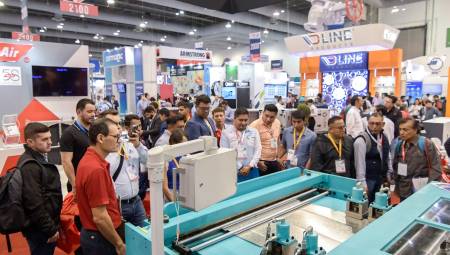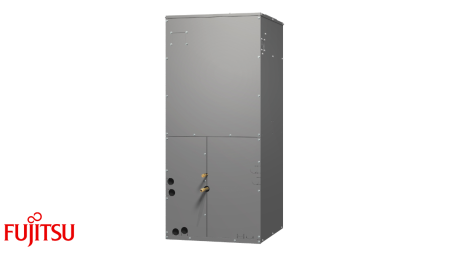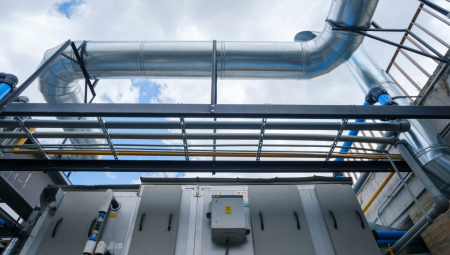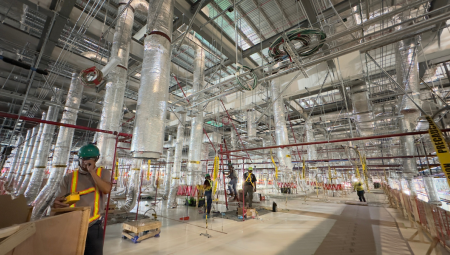 The implementation of the Internet of Things in the HVAC industry is just beginning to be understood and taken into account in the projects. In this article we delve into the subject.
The implementation of the Internet of Things in the HVAC industry is just beginning to be understood and taken into account in the projects. In this article we delve into the subject.
by Eng. Julio Londoño*
Nowadays almost all household appliances in the home can be connected to the Internet and monitored using an App installed on our mobile phone or from a web page. All this thanks to the Internet of Things, IoT (Internet of Things).
We have seen how the concept of "Smart Homes" has evolved since the introduction of the NEST thermostat, which was the device that revolutionized the industry of home devices connected to the Internet and controlled by an application from the mobile phone.
One of the factors that has most accelerated the adoption of this technology is that the installation and internet connection can be done by anyone without any technical knowledge; components can be purchased in construction stores, electronics stores or online.
But why don't we have that same level of advancement and flexibility in building automation systems? That's why the purpose of this article is to introduce where we are with IoT in BMS (Building Management Systems) and what comes along the way.
"The Cloud": What is it and how does it work?
The key to making all of this work is the cloud. When you open the thermostat app to see the temperature of your home, that information doesn't come directly from the thermostat; the application does not connect to the thermostat, but it connects to a place on the Internet and since it is not known exactly where the data comes from, it is said to connect to a cloud and from there the information is downloaded.
In the same way the thermostat is sending all the temperature and operating information of the equipment and is stored in a place on the Internet: in a cloud. In fact, without knowing it we are constantly sending information to the cloud from our mobile phone, an example is our location. With information provided from the cloud, the thermostat can know if the user is within a radius of his house and turn on the air conditioning equipment so that when the temperature arrives he is under comfortable conditions or if he leaves the house without turning off the equipment; this turns off automatically when the user is out of the radius. This is called Geofencing.
Where is the cloud?
When the Internet was born, the vision was that each person or company had its server at home and from its own server published its website thus creating a collaborative, open and free environment. Although even today any person or company can have their own server connected to the internet, companies have migrated to "serverless" systems in part due to the high investment in infrastructure and the knowledge required to keep servers active, but mainly because the offer of cloud services today is very varied, safe and very easy to access.
The companies that provide "serverless" services began providing the service of "Hosting" or hosting of web pages and from there they extended to create multiple services, all based on the internet connection with their users: this is called the cloud.
The cloud is basically a network of massive computing centers distributed around the world that replicate each other and store huge amounts of information, including sensitive information such as business databases to countless Instagram memes and photos, Facebook comments and status, the travel information of each Waze user, where the shoes I ordered come from, weather conditions in every city in the world, the state of thousands of fridges without milk... in short, all the information that we can access via an App or a website.
Another reason for the massification of the IoT is that the barriers to entry are very low: all the information and training required to connect a device to the internet and create a web page to access this information is available online and the electronic components can be obtained very easily and are very cheap.
For a science fair project, a high school student can use an Arduino or Raspberry Pi controller, which you get on the market for less than $35 and with it create a temperature control or monitor the cleanliness of your fish tank, or connect a spy camera in your room. Information on how to do this can be found by doing a simple search on the internet and following a tutorial on Youtube.
The controller can connect to the cloud with any wi-fi access, even sharing the phone's wi-fi without needing to go into complicated settings on network routers. In order to read the information, a web page must be created (cloud service providers have free hosting plans for students and the programming tools are open source and available under a free distribution license).
Even if you don't subscribe to a free plan, you only pay for what you use, making the service very affordable. This has changed the business model; traditionally you buy a software license, some very expensive, companies must depreciate this purchase and then you have to pay for upgrades, with another additional investment of capital. With cloud services you buy a subscription, which can be monthly or annual, with a very low initial cost compared to the cost of a license and you pay for what you use, being able to cancel the subscription at any time. Accountingly it is an operational investment and not capital that does not imply depreciation.
Easy access to technology has allowed a large number of small companies or Start-Ups to be created far away from Silicon Valley. An example is Intelmotics in Medellin, Colombia. This company was created by an electronic engineering student with a couple of friends who developed a hardware and software platform to control, by infrared control, residential air conditioners type "Mini-Split" that have remote control and in the cloud run algorithms to save energy. And like this one, there are multiple companies around the world developing similar IoT solutions.
IoT implementation in BMS and challenges it faces
Remote Monitoring and IoT: Since its inception, one of the main features of building automation systems is the possibility of remote monitoring. Early systems had analog modems connected to telephone lines. In order to access each site the user had to "call" the specific site. If several buildings were being monitored, each system had to be "called" or connected individually.
With the incorporation of IP technology in both field and building controllers, systems can be connected to existing IP networks on site. This is the most common method today, where the user accesses the control system using an IP-like network connection. In this scenario, the user must be connected on the same network where the control system is connected.
In some applications such as banks or retail, for security reasons, it is not possible to connect any external device to the business network. In these buildings an independent IP network must be created and in some cases, as in banks, this is also not allowed, being forced to install serial type networks without external access.
Another option is to open a port in the network firewall and enable a network IP address to access from the Internet. The firewall is software that allows access to a private network from the Internet (or from outside). This method can create security vulnerabilities and is rarely authorized by the network administrator.
In some markets, Internet Service Providers (ISPs) enable a public IP address that can be accessed from anywhere on the Internet. If the control system is configured with this address, then it can be accessed remotely using a web browser. This is not a very safe option either, because anyone can type the address in their browser and enter the system.
The best option to access the system is using a VPN (Virtual Private Network) connection. This is the safest option of all; with a VPN you can even access multiple sites on the same connection.
Although access using IP technology allows access to the system using the Internet, this is not IoT, because the connection is direct to the system and not to the cloud and all the information of the equipment and the navigation screens are stored on site in the building controller or in local servers. To be IoT, the system must store all the information in a cloud and the user accesses their building by entering a web page via the Internet.
* Eng. Julio Londoño. BMS Business Development Manager, SAEG Engineering. [email protected]














